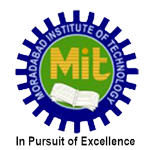
Department of Computer Science & Engineering
Centre of Excellence
Internet of Things
Introduction
IoT-LAB documentation brings detailed information about the testbed, its usage and its tools to make the most of this experimentation platform and give you the best user experience.
Quickstart
The testbed enables access to hundreds of boards for experimenting, deployed across different sites. This deployment makes IoT-LAB:
- multi-platform, in that it offers various different experimentation boards;
- multi-radio, in that boards don’t all have the same radio chips, and some have more than one;
- multi-topology, in that the physical deployments are all different (in grids, in several corridors, dense, scattered, over several levels, etc.);
- multi-OS, in that the different boards have one or more embedded OS support.
The main server serves the open API that allows all interactions. Of course, an easy access is provided through a web portal and command line interface (CLI) tools.
In addition, the testbed offers an hosted environment on SSH frontends (one per IoT-LAB site), featuring:
- pre-installed command line interface (CLI) tools,
- cross-compiler toolchains for target architectures,
- access to devices serial link, debuger and radio sniffer.
- and experiments results,
e-Yantra (Embedded Systems and Robotics Lab)
e-Yantra Lab Setup Initiative provides guidance in setting up Robotics lab at college. The eYantra Lab Setup Initiative also trains teacher in theory and application of Robotics.
The Ministry of Human Resource Development (MHRD) sponsors e-Yantra under the National Mission for ICT in Education (NMEICT) program.
We have taken an initiative to setup e-Yantra Robotics Lab under e-Yantra Lab Set-up Initiative (eLSI) by IIT Bombay on April 2019. This lab trains the students in embedded systems and micro-controller programming.
The e-Yantra Lab Setup Initiative has three stages-
In first stage, e-Yantra Lab Setup initiative trains teachers through two day workshop on basic concepts on embedded system and microcontroller programming.
In second stage, e-Yantra Robotics Teachers Competition where teachers implement Robotics project over a period of three months. Each college is given Robotics Kit with Accessories and Tutorials and taken through project implementation life cycle.
In third stage, e-Yantra Lab Setup Initiative provides help and assistance in setting Robotics Lab, so that by the time teachers are trained, the colleges are ready with labs for teachers to get students involved through projects.
Benefits of e-Yantra robotics lab to students:
- Awareness of embedded systems, robotics technology and mechatronics.
- It provides platform to design, develop, program and test of robots to various applications.
- Students can participate in national and international robotics competitions.
- Improve B.Tech projects with help of e-Yantra open source community.
- Exposure to job opportunities in robotics.
- Encourage to use robots to solve real life problems.
e-Yantra Competitions:
- e-Yantra Robotics Competition (eYRC)
- e-Yantra Robotics Competition Plus (eYRC+)
- e-Yantra Robotics Teacher Competition (eYRTC)
- e-Yantra Ideas Competition (eYIC)
Lab Hardware:
Sr. No. | Equipment |
1 | FireBird V 2560 |
2 | Spark V Robot |
3 | Fire Bird V P89V51RD2 adapter card |
4 | Fire Bird V LPC2148 adapter card |
5 | Zigbee Modules 100m range |
6 | Zigbee Modules Adapter |
7 | Metal-gear Servo Motors |
8 | Servo Motor Based Gripper kit for the Fire Bird V robot |
9 | Sharp GP2Y0A21YK0F infrared range sensor (10cm to 80cm) |
10 | Programming Software (AVR studio, Keil, AVR Boot loader, Flash Magic) |












